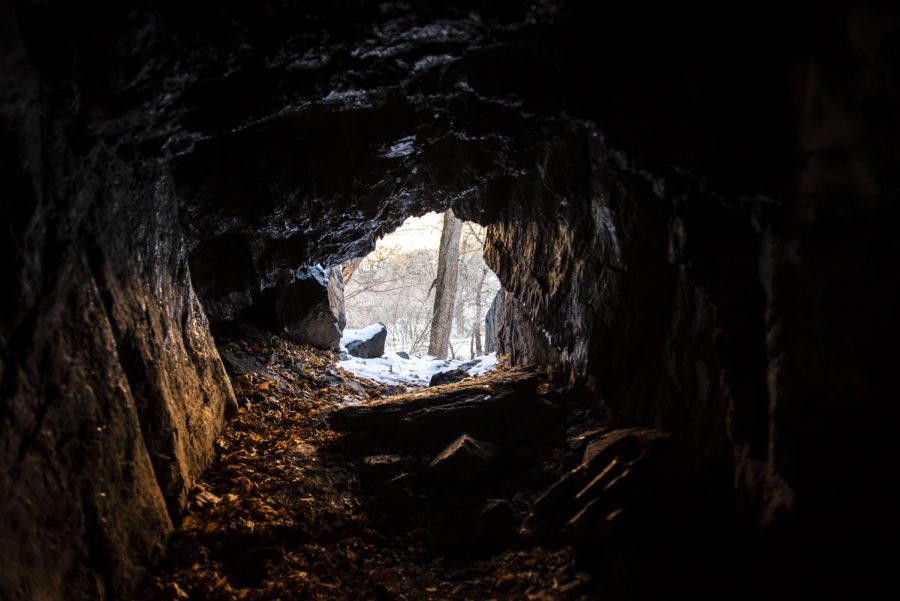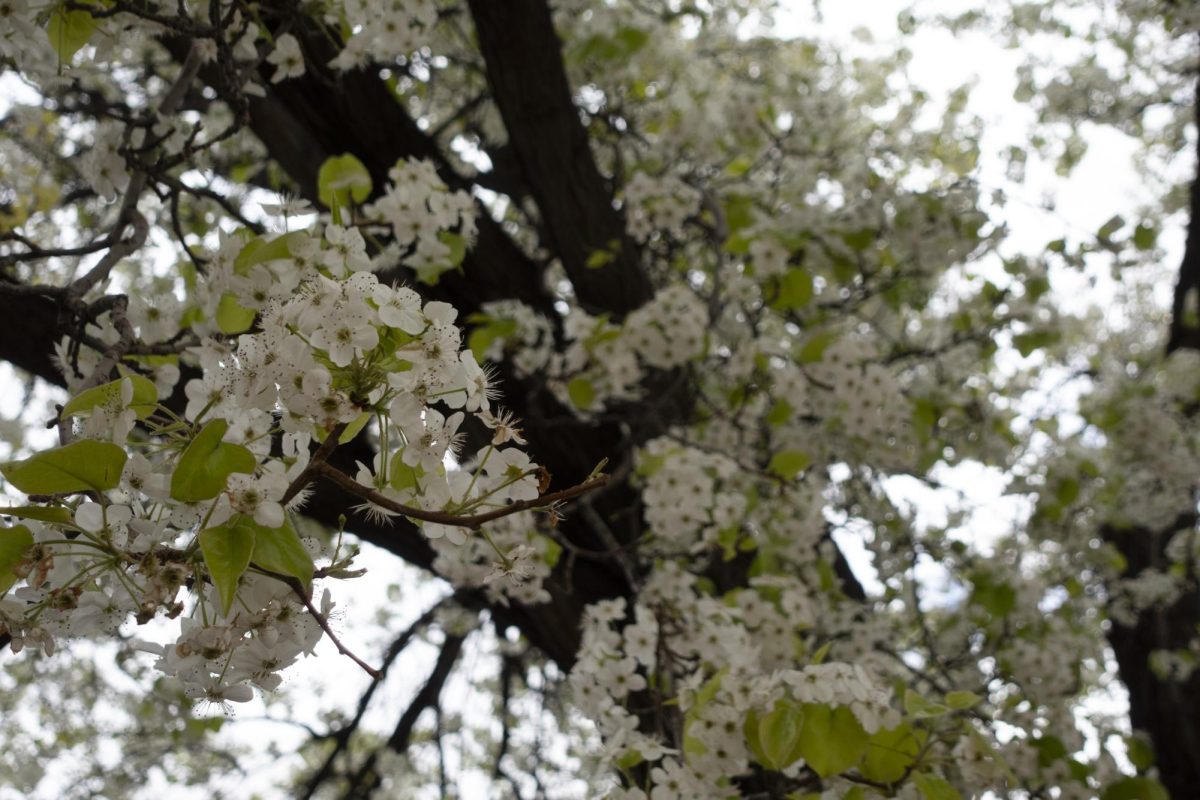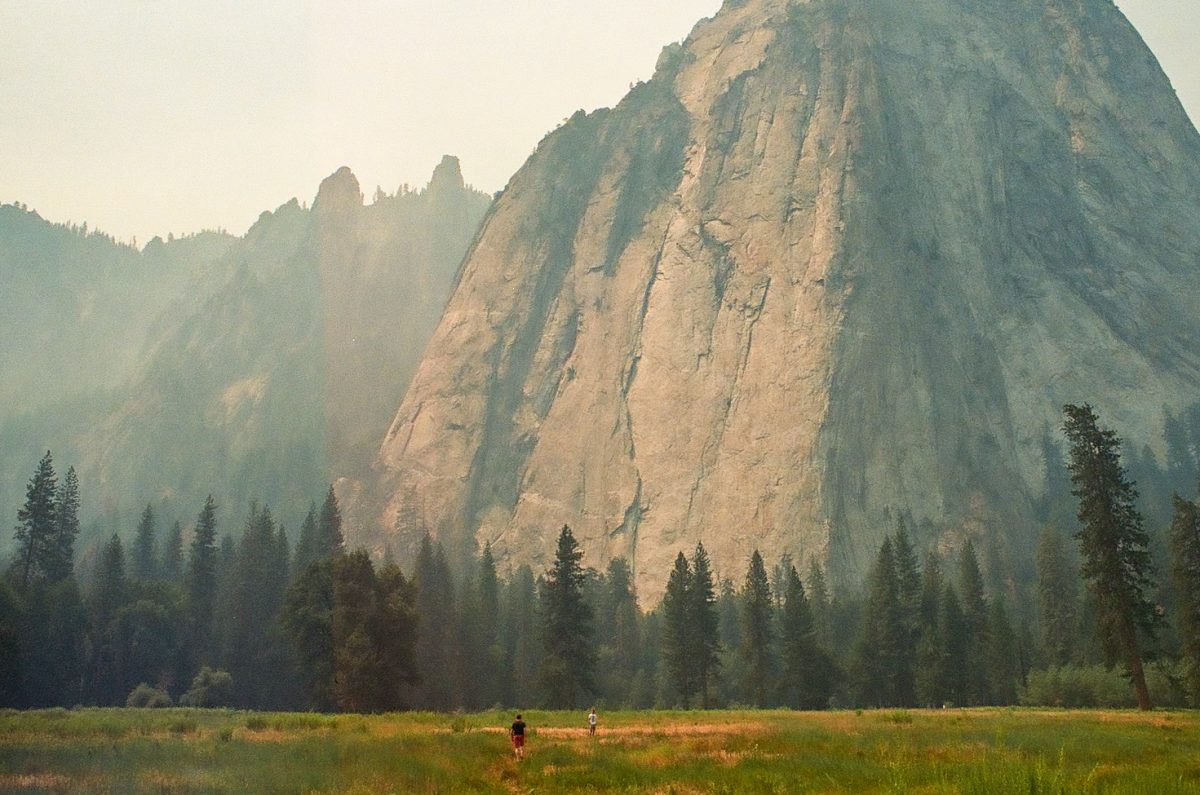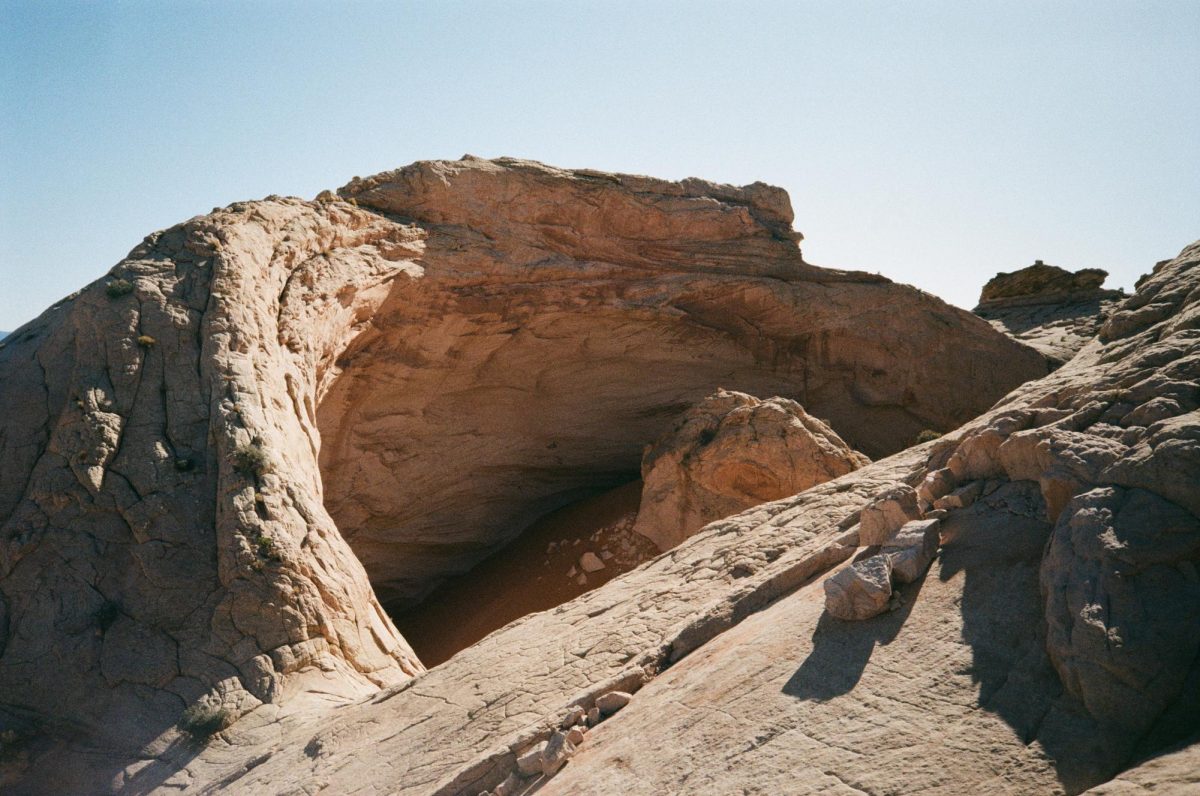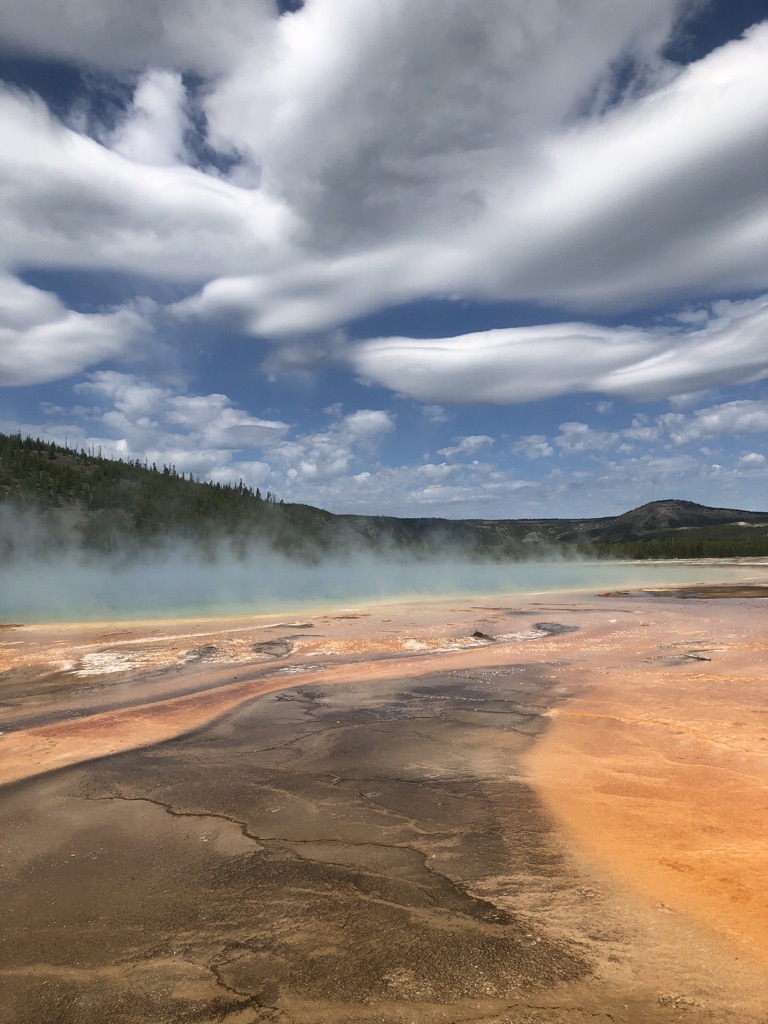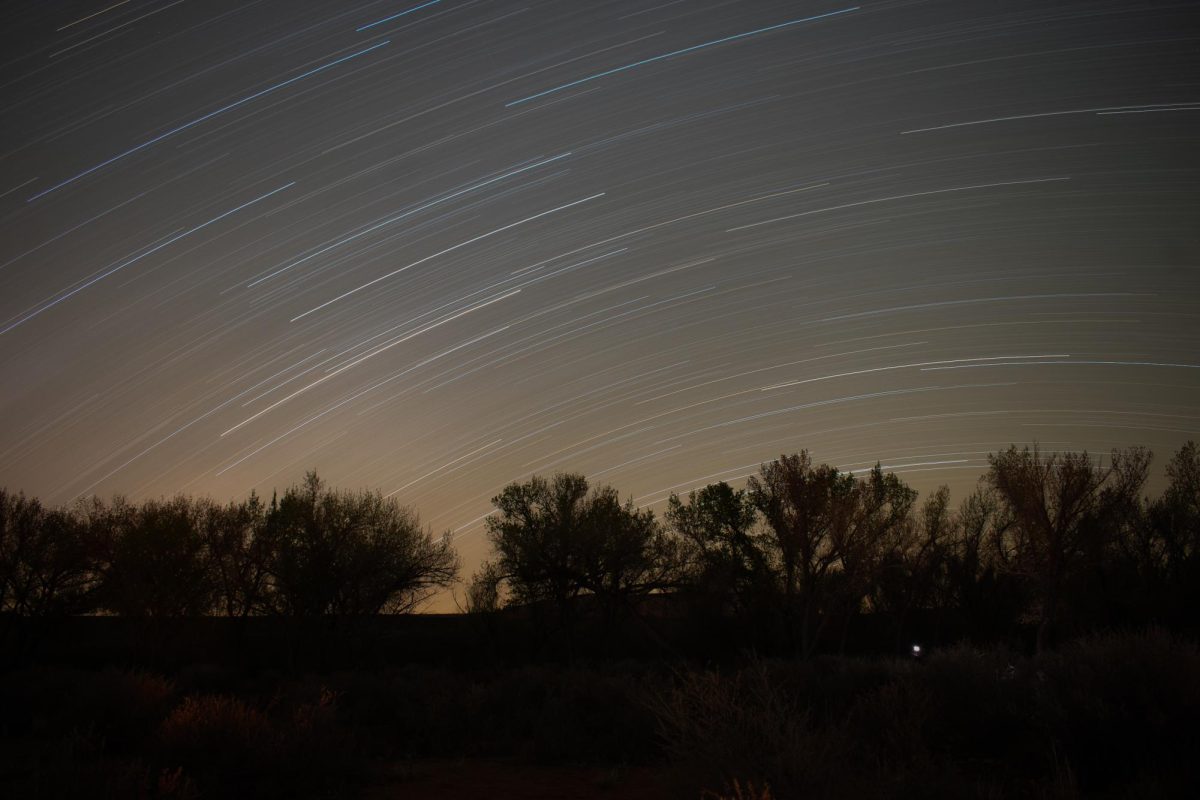The Wasatch Underground
Caving. Photos by Peter Creveling.
December 27, 2019
Imagine squeezing your body through a foot-wide hole in cold, sharp rock — contorting your body to match the shape of the hole, you push through. Your helmet, headlamp, harness and kneepads offer resistance but somehow are manageable. All of this happens hundreds or thousands of feet underground and is just so you can see where some hole goes. This is all part of the adventure sport that is spelunking.
It’s a pretty disturbing feeling to be in a place that can be extremely dangerous. Yet, adventuring into these places and seeing things no one else would unless they took the same path can be blissful. Spelunking — or caving — is an intricate adventure sport and maybe one with the most unexplored territory.
“For many people it is a recreational activity just to explore the unknown” says Larry Spangler, a member of the Wasatch Grotto. “For others it is for scientific purposes such as studying the hydrology, biology, or geology of a cave.”
The Wasatch Grotto is one of three chapters in the state of Utah. Spangler describes a grotto as “a local caving organization that is an entity of the National Speleological Society.” He says they “provide a social network or gathering point for those who want to learn more about caving, share stories of their caving adventures, or to organize caving trips.” As mentioned previously, there are three grottos in Utah. The Wasatch Grotto, the Salt Lake Grotto, and the Timpanogos Grotto. All of these grottos have websites where information can be found about meetings and other various things.
Adventure sports, such as rock climbing and canyoneering, have seen a large boom in popularity in the past decade. It’s become easier to get into these kinds of sports and they have moved away from the notion that they are only for people seeking an adrenaline rush. People simply love to seek adventure and see new things, especially the young generations. Yet caving is a little different. “To tell you the truth, I think it is diminishing in popularity,” says Spangler. “Over the 50 years that I’ve been doing this, I’ve seen a decline in attendance at caving meetings and a general ‘aging’ of the population who like to do this sort of thing.”
Perhaps the decline in people who seek thrill in caves is due to a rampant rise in claustrophobia, or maybe it’s simply that it’s dangerous for beginners to get into. The dangers in caving include falling, flooding, loose rocks, lack of oxygen and physical exhaustion. Hypothermia is also a large concern due to the bitter cold that inhabits most caves. Accidents don’t happen all the time but, as with any sport, there is always one bound to happen. One cave in Utah has seen a handful of accidents and has since been permanently closed and sealed off. The Nutty Putty cave, which is west of Utah Lake, has been closed since 2009 after a man became trapped for more than 20 hours before dying. His body was never recovered from the cave.
It takes a lot of skill and knowledge to weigh the dangers involved while caving, these skills can take decades to learn, and no person can ever truly master the skill of weighing risk. The truth is that things happen beyond what we can imagine and what we have control over. Yet, this is the beautiful attraction to caving and any adventure sports. Going into the unknown puts your mind and body into a level of consciousness that is pure flow that leads to genius action. This state of flow saves lives more often than not. The goal is to put aside the fear and move past it to explore more and see new things, such as the millions of caves in the world.
One of the most popular caves in Utah is also a designated national monument. The Timpanogos cave is located in American Fork Canyon. It was first discovered in 1913 and has a legendary history that surrounds it. To see the cave, you must be on a guided tour led by a ranger. The tour to see the cave can be done by any person who is in decent shape. The rangers also hold another kind of guided tour called the introduction to caving tour. The National Park Services website says anyone who wants to take this tour must be in good physical condition due to the strenuous nature of exploring the cave. For anyone interested, the caving tour costs $22 and is done from Memorial Day to Labor Day.
Besides Timpanogos cave, there are hundreds of caves in Utah that make up vast networks underground that are just waiting to be explored. Although, cavers are notoriously secretive about locations and route information. They don’t want to see these beautiful areas become trashed. Caves took millions of years to form, but with too much traffic they could be destroyed in an instant. It’s a fair point.
A caves geology is one of its main attractions. Regular cavers love to see the unique rock formations, but geologists literally make this their job. Such formations like stalactites and stalagmites are almost hypnotizing in their beauty and encourage people all over the world to get 0ut and see the rock formations in person. Some caves are protected by government parks and make it easy to see these formations. Carlsbad Caverns in New Mexico is perhaps one of the most popular caves in the U.S. due to its easy access and unmatched beauty. Overseas, Sung Sot Cave in Vietnam attracts millions of people a year. Sung Sot has incredible formations that glow with all colors of the rainbow.
In Utah, caves can be found all over the state. Horizontal caves, which are generally less technical and simpler to explore, can be found in the west desert and southern Utah. The eastern Uintah mountains house some of the longest horizontal caves in the state — such as Little Brush Creek Cave near Vernal. For reference, Timpanogos Cave is 0.54 miles long while Little Brush Creek Cave is over 5.90 miles long. Vertical caves, which tend to be more technical in nature, can be found scattered through the Bear River Range in northern Utah. Main Drain Cave located in Logan Canyon is the longest vertical cave in the state, with a length of 1,227 feet.
If you are looking to get into caving, take action now and go to the next closest grotto meeting. “The best way to get into caving is to find one of the local grottos and attend one of their meeting” says Spangler. Be safe in these adventures and remember that knowledge comes first and physical skill comes later.

